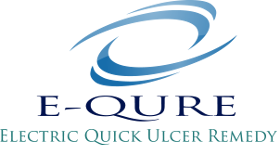The Science of Bioelectricity
Electrical flow in the body (i.e., bioelectricity), plays a significant role in many physiological and pathophysiological conditions (health and disease). Nerves relay information and mediate body functions by transmitting electrical impulses: bioelectrical signals.
Bioelectricity refers to electrical currents occurring within or produced by the human body. Bioelectric currents are generated by a number of different biological processes, and are used by cells to conduct impulses along nerve fibbers, to regulate tissue and organ functions, and to govern metabolism.
Bioelectrical currents (and potentials) of human tissue, recorded from the skin surface by electrocardiograph (E.C.G.), electroencephalograph (E.E.G.), electromyography (E.M.G.) and similar sensitive devices, are widely used in medicine to diagnose the condition of various vital organs.
The most important difference between bioelectric current flow in the living organisms and the type of electrical current used to produce light, heat, or power is that bioelectrical current is a flow of ions (atoms or molecules carrying an electric charge), while standard electricity is a movement of electrons.
Skin Bioelectricity
The normal (intact; healthy) skin has a bioelectrical activity, which is in constant, slight variation, and can be measured and charted. Skin electrical potential is relatively weak and can be measured with highly sensitive instruments in the range of micro-volts. The skin's bioelectrical conductivity fluctuates based on certain bodily conditions such as hydration, emotions, stress and disease.
Decades ago, skin potential was explained as a function of the characteristics of the membrane and internal body ion concentration in relation to the ion concentration in the external electrolyte. The epidermal membrane (the external layer of the skin) behaves as if it has a fixed negative charge. It is permeable to Cations (ions with positive charge; +ve) which pass through it and leave an excess of Anions (ions with negative charge; -ve) in the electrolyte external to the surface. A potential difference appears across the membrane; the outer skin surface appearing negative (-) and the inner soft tissues positive (+) (see illustration below). This phenomenon known as Galvanic Skin Response provided the basis for the insight that skin behaves like a battery, i.e. specific ions are moving across the skin in a unidirectional manner e.g., Direct Current – DC. In normal conditions positive ions such as sodium (Na+) are transported toward the skin, whereas negative ions such as Chloride (Cl-) are moving outward.
Only in early 60's, Becker et al., suggested that the DC skin potential should be attributed to nerve function *1-*4. Sensory nerves innervate the skin and their function creates the ions flux and the DC potential of the skin.
Whereas research on direct current (DC) in skin bioelectricity has a long history, electric fields of alternating current (AC) with much complex electric field have been much less studied.
Skin Injury and Bioelectricity
The bioelectric activity which is associated with the skin and underlying soft tissues is widely reviewed in biomedicine. This science is of direct relevance to wound healing when it concentrates on the effect of injury, trauma and disease on skin bioelectricity.
Prior to the eighteenth century, European physicians and philosophers generally believed that nervous impulses were conducted to the brain via an organic fluid of some kind. The experiments of two Italians, the physician Luigi Galvani and the physicist Alessandro Volta, demonstrated that the true explanation of nervous conduction is bioelectricity. Impulses within the nervous system are carried by electricity generated directly by organic tissue.
In the nineteenth century, researchers as Emil du Bois-Reymond invented and refined instruments that were capable of measuring the very small electrical potentials and currents generated by living tissue.
By utilizing these measurement techniques, Emil du Bois-Reymond identified a unique electrical potential that was triggered during tissue injury. He termed this bioelectrical current as "The Current of Injury", a scientific finding which provided the basis for extensive research and numerous studies on the role of bioelectricity in wound healing.
Numerous studies revealed how skin bioelectricity influences wound healing by attracting the cells of repair e.g., macrophages, neutrophils stimulating cell proliferation e.g., fibroblasts, enhancing cellular secretion through cell membranes and orientating cell structures. This phenomenon is known as galvanotaxis and it is based on the DC "Battery model" of the skin.
A direct current (DC) termed the "current of injury" is generated between the skin and inner tissues when there is damage in the skin (see below). The current will continue until the skin defect is repaired. Healing of the injured tissue is arrested or will be incomplete if these currents no longer flow while the wound is open. This DC concept created the basic rationale for the use of electrotherapies in wound healing for years. The application of electrical current to the wound mimics the natural current of injury and will accelerate the wound healing process *5-*9.
References
- Becker, R.O. Search for evidence of axial current flow in peripheral nerves of the salamander. Science 1961; 134:101
- Becker, R.O. Some observations indicating the possibility of longitudinal charge carrier flow in peripheral nerves. In Biological prototypes and synthetic systems, eds. E.E. Bernard, and M.R. Kare, pp. 31-37. New York: Plenum 1962.
- Becker RO. Stimulation of partial limb regeneration in rats. Nature1972;235:109-111.
- Becker RO. The basic biological data transmission and control systeminfluenced by electrical forces. Ann N Y Acad Sci 1974;238: 236-241.
- NP UAP –EP UAP Guidelines for Pressure Ulcer Prevention and Treatment. www.npuap.com and www.epuap.com. 2009.
- Wolcott, L.E., Wheeler, P.C., Hardwicke, H.M., Rowley, B.A. Accelerated healing of skin ulcer by electrotherapy: preliminary clinical results. South Med J 1969; 62: 7, 795-801.
- Carley, P.J., Wainapel, S.F. Electrotherapy for acceleration of wound healing: low intensity direct current. Arch Phys Med Rehabil 1985; 66: 7, 443-446.
- Gardner, S.E., Frantz, R. A., Schmidt, F.L. Effect of electrical stimulation on chronic wound healing: a meta-analysis. Wound Rep Reg 1999; 7: 495-503.
- Kloth, L. Electrical stimulation for wound healing: a review of evidence from in vitro studies, animal experiments, and clinical trials. Int J LowExtreme Wounds 2005; 4: 1, 23-44.
